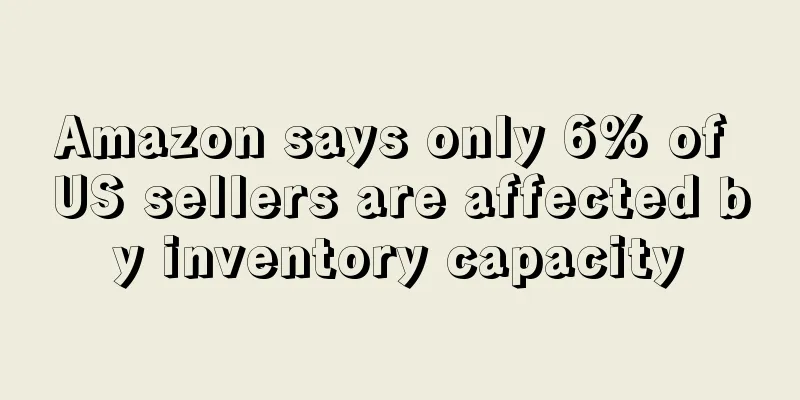Amazon says only 6% of US sellers are affected by inventory capacity

|
Not long ago, many sellers said that the Amazon FBA inventory capacity of their stores dropped sharply, affecting their holiday season stocking plans, and Amazon officials finally responded to this.
On October 25, an Amazon spokesperson commented on a seller’s tweet: “To ensure the holiday shopping season continues, we have adjusted the replenishment limits for standard items and apparel products. Sellers can now store 3-4 months of inventory in FBA warehouses, including seasonal products and pre-orders.”
On October 27, some sellers once again pointed out that this replenishment restriction had a huge impact on their business, because they all hoped to bet on the fourth quarter to save the full-year sales, but the inability to replenish stocks made their hopes come to nothing. Another seller said that he would focus more on the Walmart platform in the fourth quarter. An Amazon spokesperson also responded to the seller, writing: “ We estimate that only about 6% of sellers in the U.S. are subject to capacity constraints and cannot restock standard and apparel products. Our records show that these sellers have shipped more than three months of inventory, including seasonal and pre-sale items. ”
The spokesperson added: "If this policy changes in the future, we will provide sellers with the latest notification."
Another seller commented: “The biggest issue for me and many other sellers is that available inventory may appear to be ample at the account level, but at the SKU level, my best-selling products are running out of stock. If I had known about this replenishment limit in advance, I would have taken action in advance.”
An Amazon spokesperson responded: "We carefully consider all seller feedback and will continue to monitor the storage capacity of our warehouse network. Although sellers are currently limited in storage capacity due to high demand, we will consider any possibility to reduce the impact of storage capacity constraints on sellers in the future and do our best to ensure the normal operation of sellers' businesses."
In addition, some sellers said that the inaccurate arrival time of replenished products also had a certain impact on their business. Amazon has not yet responded to this issue. Amazon Storage capacity |
<<: The opportunity has come! Top sellers crack the dark horse of traffic
>>: Concentrate on IPO! Many big sellers are facing the "cold"
Recommend
eBay Fulfillment launches local return warehouse service
Recently , eBay announced that in order to help s...
What is China Post Overseas Warehouse (CPWS)? China Post Overseas Warehouse (CPWS) Review, Features
China Postal Warehousing Service (CPWS) is an over...
Urgent! Infringement cases of multiple popular products in the United States
For a long time, cross-border online celebrity in...
The popularity soared by 2066%, and the wildfires in the United States made these products "hot"!
Just as 2025 began, Amazon sellers suffered a hea...
What is Kinnek? Kinnek Review, Features
Founded in 2012, Kinnek is a technology platform ...
Amazon Prime's delivery speed has set a record, with 1.8 billion items delivered on the same day this year!
Doug Herrington, CEO of Amazon Global Stores, sai...
What is AKMALL COD Single Page Order System? AKMALL COD Single Page Order System Review, Features
AKMALL COD single-page order system is a COD singl...
What is StoneBridge? StoneBridge Review, Features
StoneBridge is a business tax firm with over 20 y...
More than 36 million funds were frozen! Big seller initiated arbitration against Amazon
In 2021, a massive Amazon "account ban wave&...
Dama will spend 200 million to buy land in Shenzhen
It is not uncommon for large companies to spend h...
Amazon launches free one-day delivery service in more than 50 cities in Brazil
In order to further compete for the Brazilian mar...
What is MOKO? MOKO Review, Features
MOKO is a brand specializing in the sale of digit...
What is Listing Mirror? Listing Mirror Review, Features
<span data-docs-delta="[[20,{"gallery"...
Amazon launches another large-scale verification campaign! Are all sellers affected?
Recently, Amazon sellers have been busy with vari...
60% of consumers are willing to pay for sustainability! Product packaging may become the focus
During the past pandemic, e-commerce sales in var...









